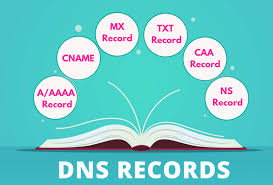Understanding DNS Records
DNS (Domain Name System) records are essential components in how the internet operates, directing how domain names are resolved and how email is routed. Here's a guide to understanding the various DNS record types and their functions.

Types of DNS Records
A (Address) Record
- Purpose: Maps a domain name to an IPv4 address.
- Example: example.com IN A 192.0.2.1
AAAA (Quad-A) Record
- Purpose: Maps a domain name to an IPv6 address.
- Example: example.com IN AAAA 2001:0db8:85a3::8a2e:0370:7334
CNAME (Canonical Name) Record
- Purpose: Redirects one domain name to another domain name.
- Example: www.example.com IN CNAME example.com
MX (Mail Exchange) Record
- Purpose: Directs mail to an email server and specifies the priority of mail servers.
- Example: example.com IN MX 10 mail.example.com
NS (Name Server) Record
- Purpose: Indicates the servers responsible for a particular zone.
- Example: example.com IN NS ns1.example.com
PTR (Pointer) Record
- Purpose: Maps an IP address to a host name, used for reverse DNS lookups.
- Example: 2.1.0.192.in-addr.arpa IN PTR example.com
SOA (Start of Authority) Record
- Purpose: Provides administrative information about a zone.
- Example: example.com IN SOA ns1.example.com admin.example.com
SRV (Service) Record
- Purpose: Identifies the host and port for specific services.
- Example: _sip._tcp.example.com IN SRV 10 50 5060 sipserver.example.com
TXT (Text) Record
- Purpose: Holds free-form text information, often used for SPF, DKIM, DMARC.
- Example: example.com IN TXT "v=spf1 mx -all"
CAA (Certification Authority Authorization) Record
- Purpose: Specifies which certificate authorities are allowed to issue certificates.
- Example: example.com IN CAA 0 issue "letsencrypt.org"
Understanding these DNS records is crucial for managing your domain's internet presence and ensuring smooth operation of email and web services. Each record type serves a specific purpose in the DNS ecosystem, and knowing how to use them effectively is key to maintaining a robust and secure online infrastructure.